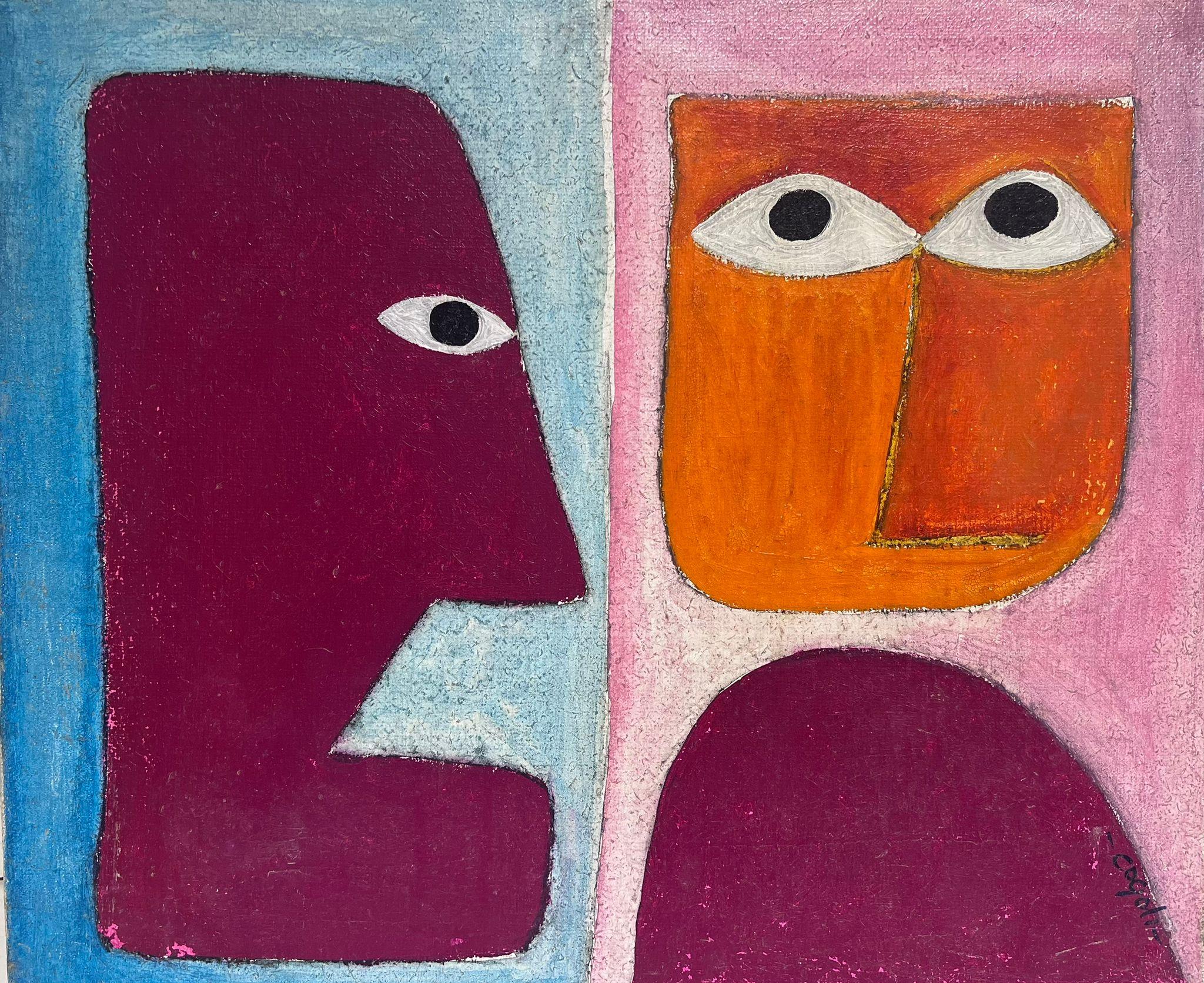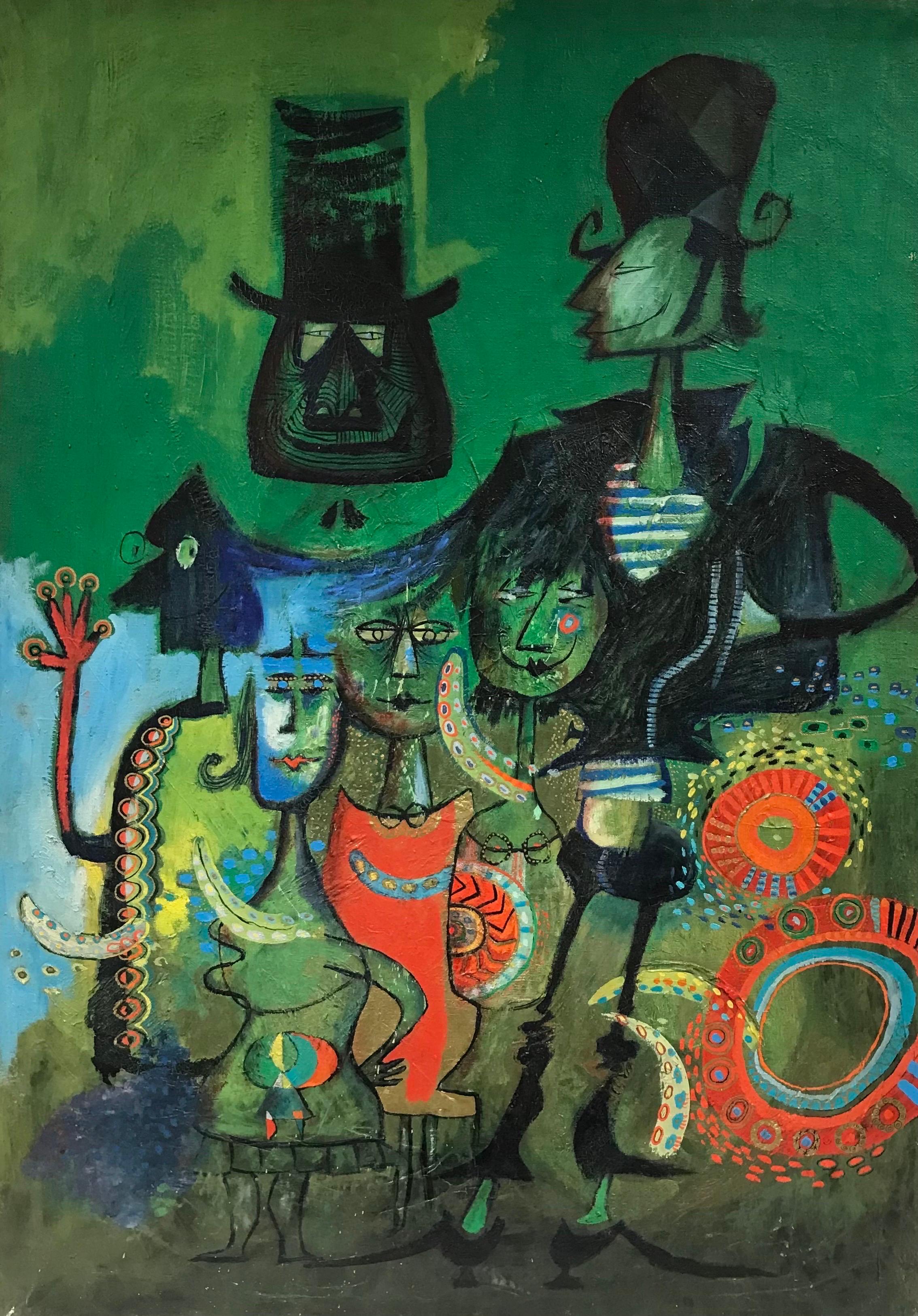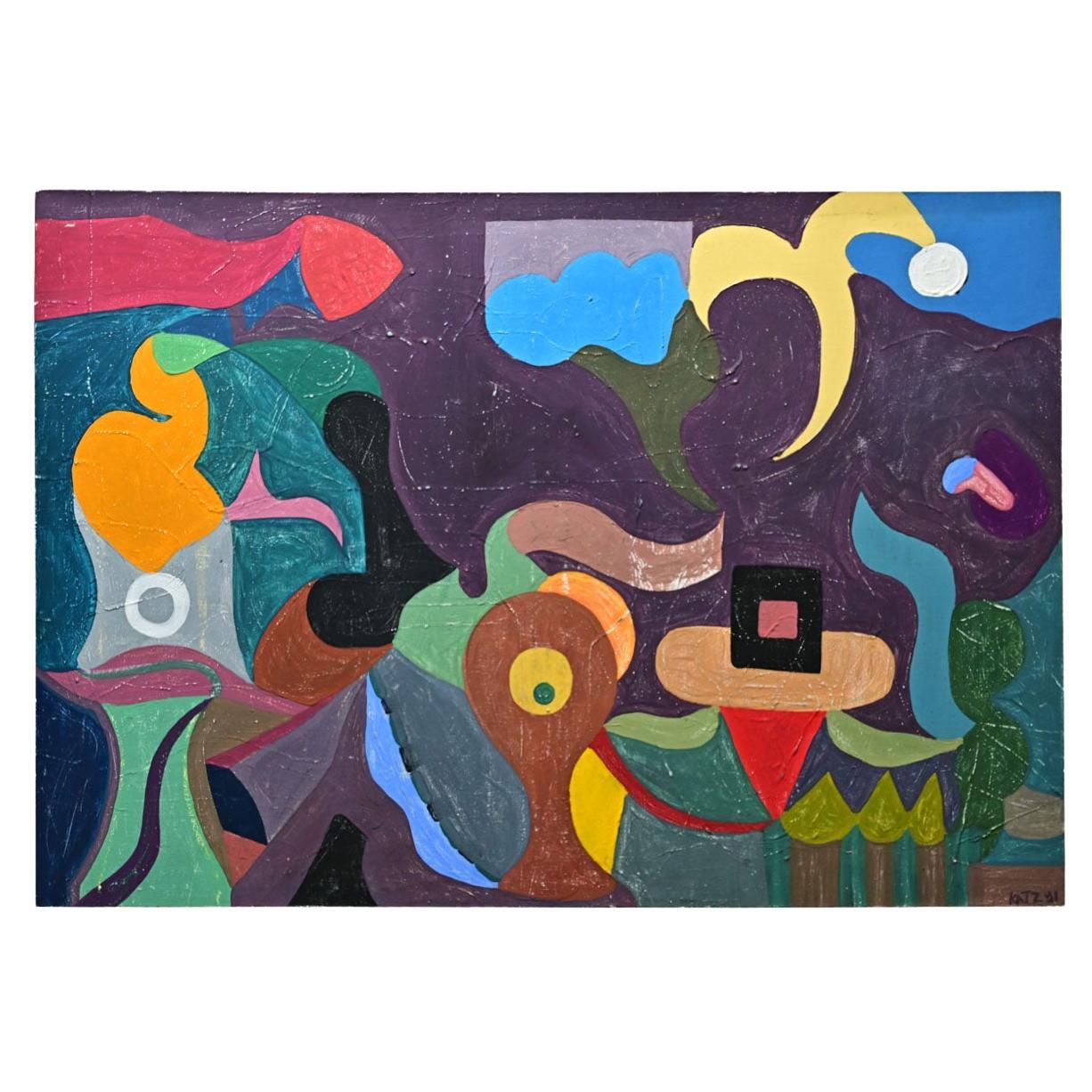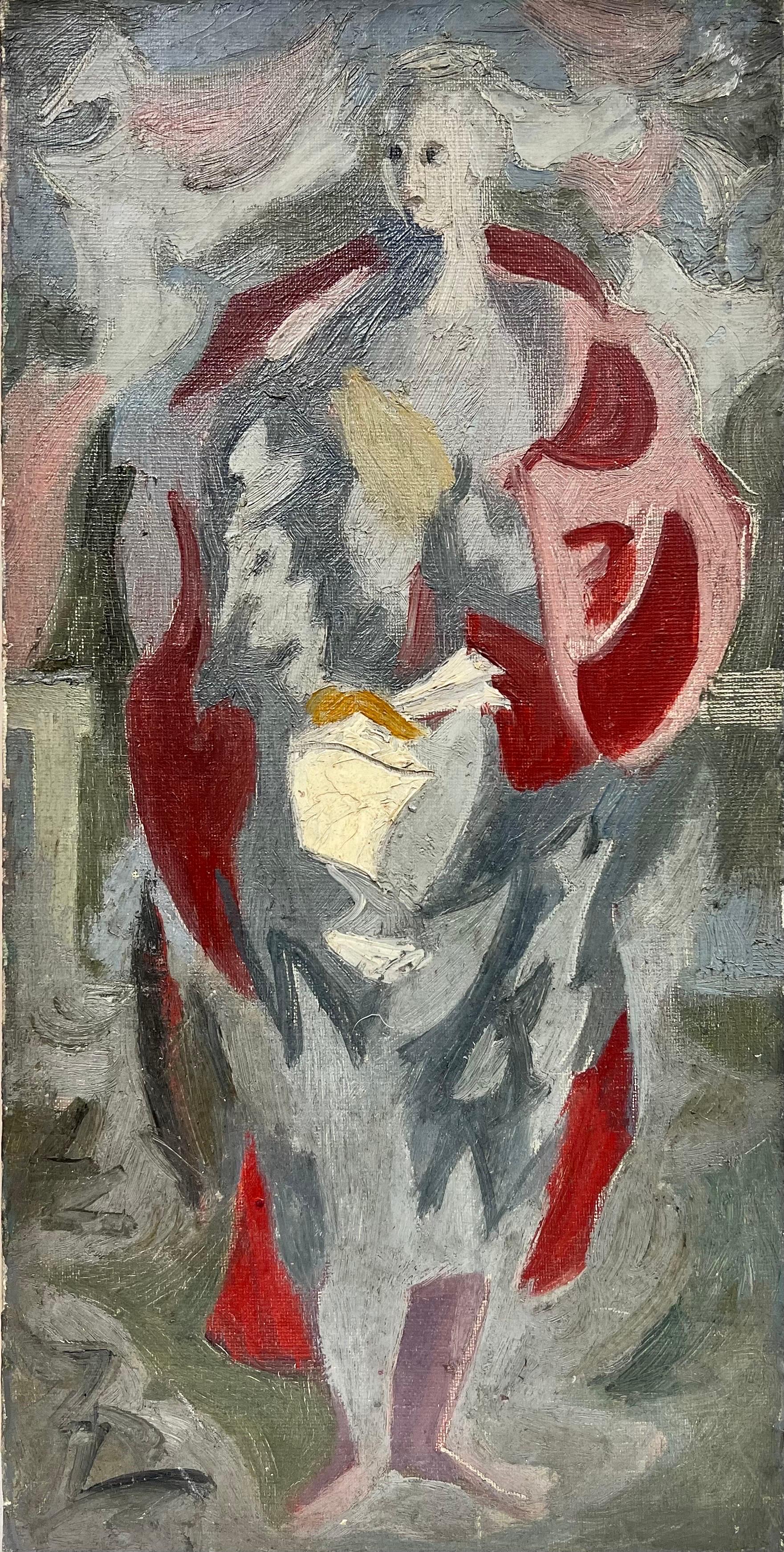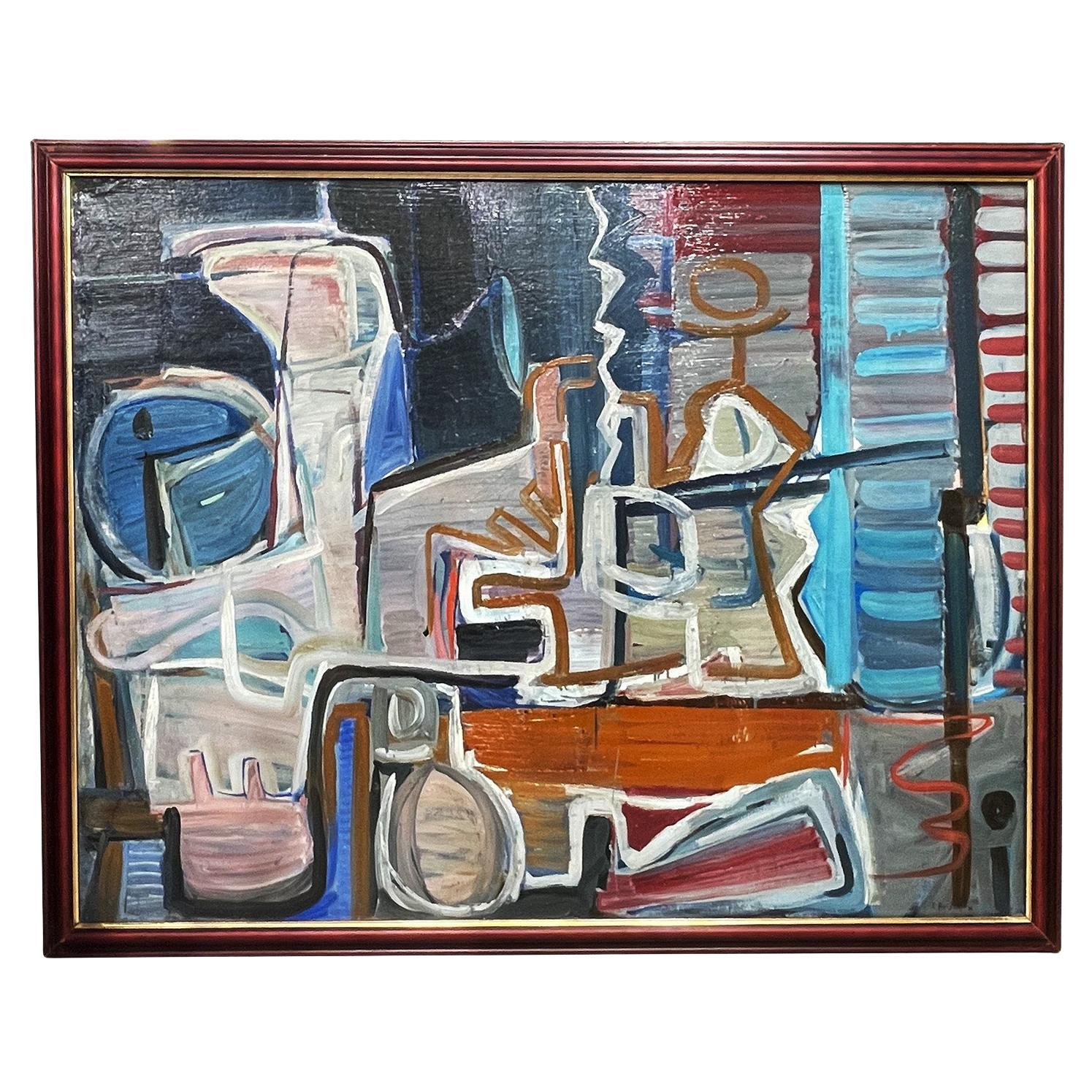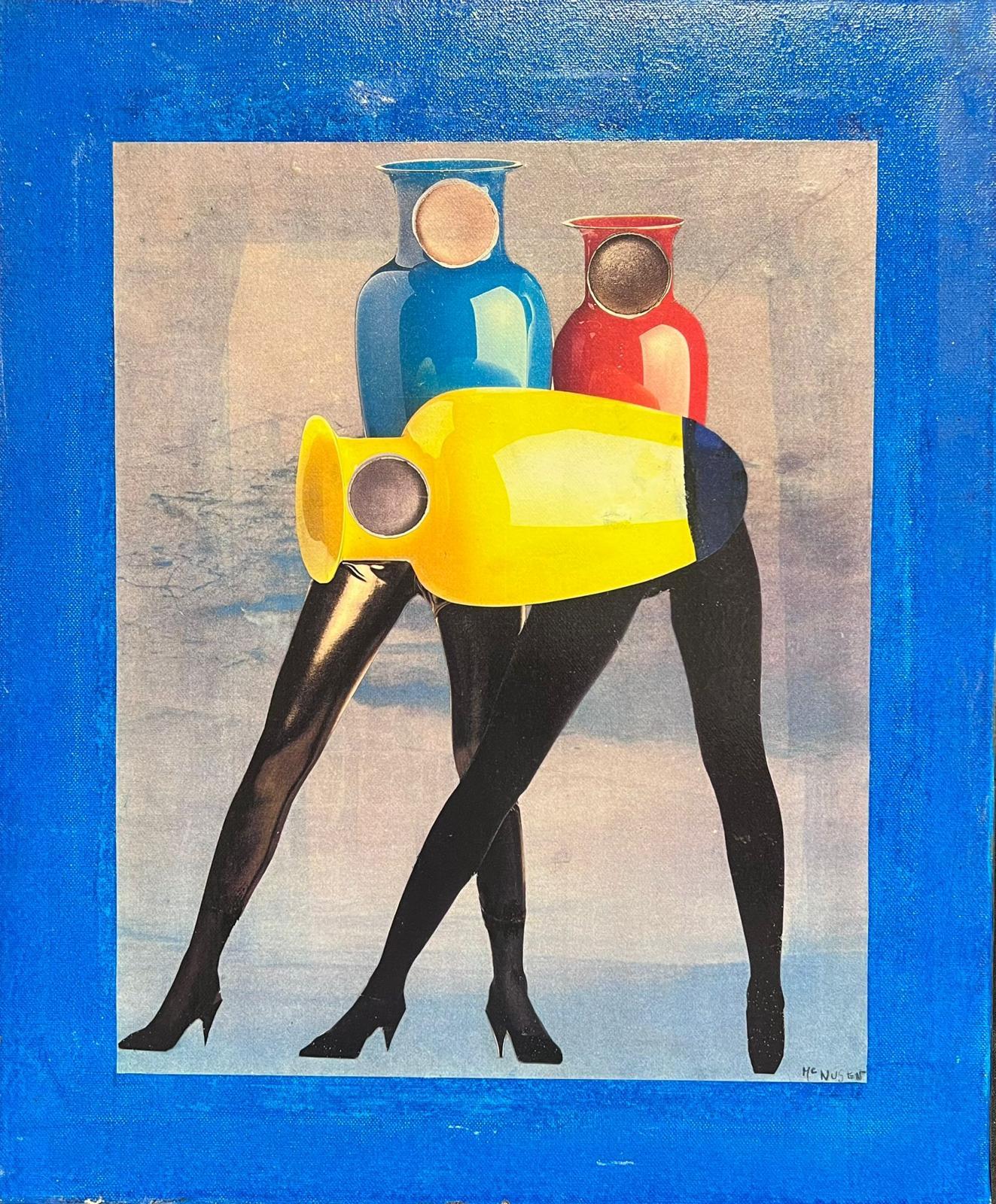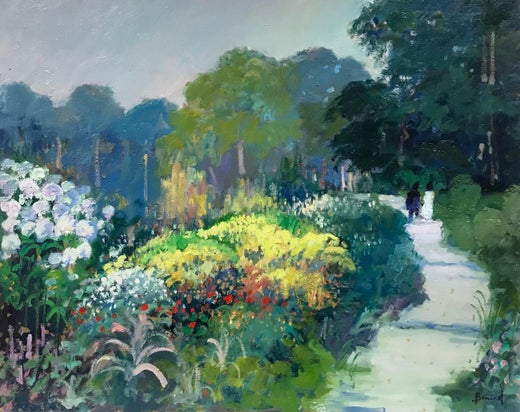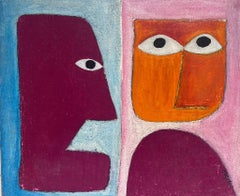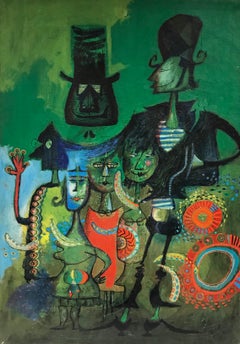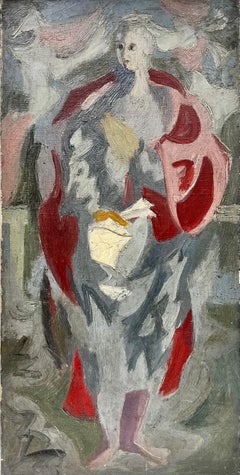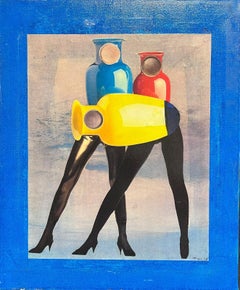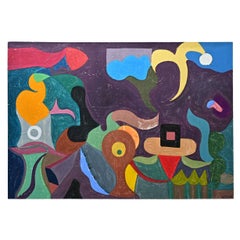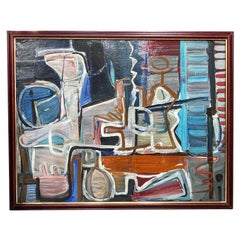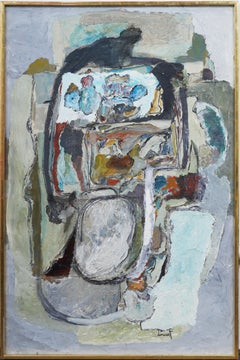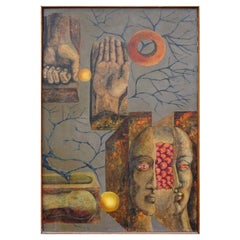Items Similar to Large 1960's French Modernist Oil Painting Bizarre Figurative Work
Want more images or videos?
Request additional images or videos from the seller
1 of 12
20th Century French SchoolLarge 1960's French Modernist Oil Painting Bizarre Figurative Work
$2,755.63
£2,000
€2,350.88
CA$3,813.11
A$4,203.86
CHF 2,199.33
MX$51,573.58
NOK 27,685.15
SEK 25,889.99
DKK 17,556.41
About the Item
Artist/ School: French School, c. 1960's
Title: Figurative Study
Medium: oil on canvas, unframed
Canvas: 36 x 25.5 inches
Provenance: private collection, France
Condition: The painting is in overall sound condition though has some paint loss to the lower right corner in particular.
- Creator:20th Century French School
- Dimensions:Height: 36 in (91.44 cm)Width: 25.5 in (64.77 cm)
- Medium:
- Movement & Style:
- Period:
- Condition:
- Gallery Location:Cirencester, GB
- Reference Number:1stDibs: LU509310753822
undefined
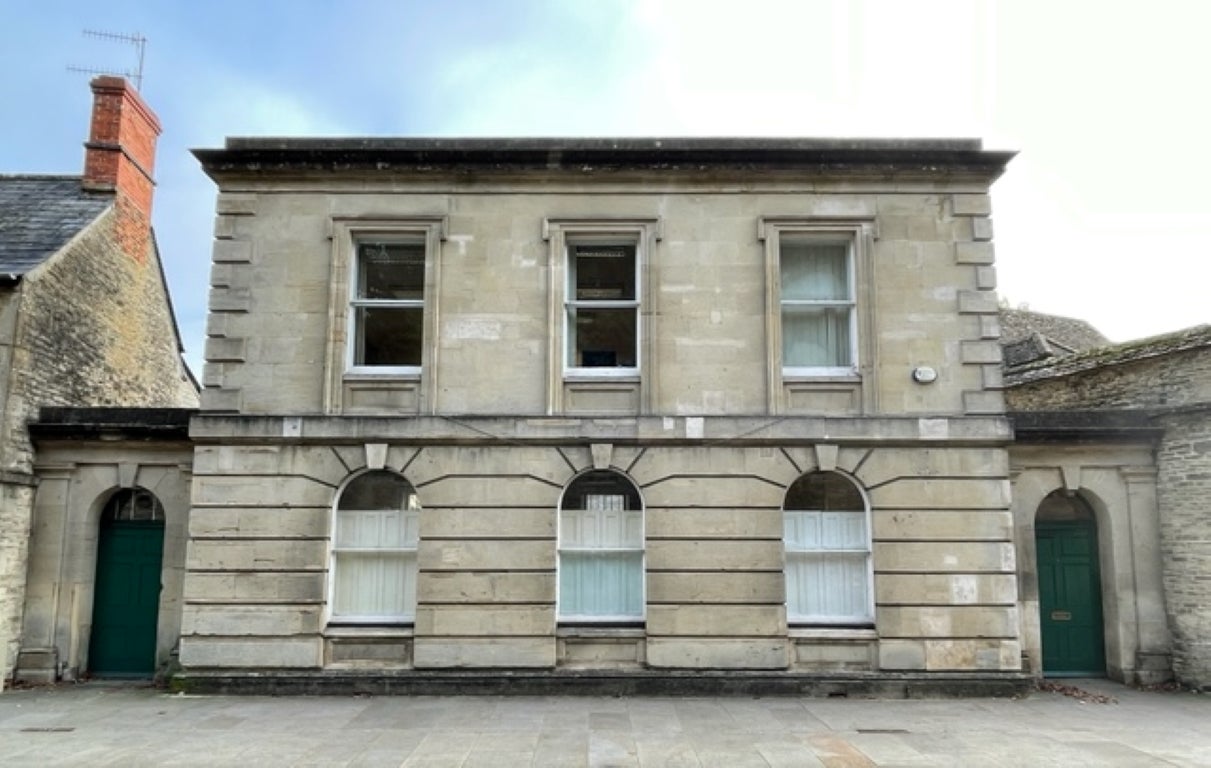
About the Seller
5.0
Platinum Seller
Premium sellers with a 4.7+ rating and 24-hour response times
Established in 1989
1stDibs seller since 2016
4,783 sales on 1stDibs
Typical response time: 1 hour
- ShippingRetrieving quote...Shipping from: Cirencester, United Kingdom
- Return Policy
Authenticity Guarantee
In the unlikely event there’s an issue with an item’s authenticity, contact us within 1 year for a full refund. DetailsMoney-Back Guarantee
If your item is not as described, is damaged in transit, or does not arrive, contact us within 7 days for a full refund. Details24-Hour Cancellation
You have a 24-hour grace period in which to reconsider your purchase, with no questions asked.Vetted Professional Sellers
Our world-class sellers must adhere to strict standards for service and quality, maintaining the integrity of our listings.Price-Match Guarantee
If you find that a seller listed the same item for a lower price elsewhere, we’ll match it.Trusted Global Delivery
Our best-in-class carrier network provides specialized shipping options worldwide, including custom delivery.More From This Seller
View All1970's French Abstract Modernist Signed Oil Figurative Portrait Oil Painting
Located in Cirencester, Gloucestershire
French modernist artist, circa 1970's
signed oil on canvas
canvas: 19.5 x 23.5 inches
provenance: private collection, France
condition: very good and sound condition
Category
Mid-20th Century Modern Abstract Paintings
Materials
Oil
1960's French Modernist Oil Painting Green background with Bizarre Figures
Located in Cirencester, Gloucestershire
Artist/ School: French School, 1960's period
Title: figurative group, with deep green color background.
Medium: oil on canvas, unframed
Canvas: 36.5 x 26 inches
Provenance: pri...
Category
Mid-20th Century Modern Abstract Paintings
Materials
Oil
Mid 20th Century French Modernist Oil Abstract Figure
Located in Cirencester, Gloucestershire
Abstract Figure
French Modernist, circa 1950's
oil on canvas
16 x 8.5 inches
provenance: private collection, France
The painting is in good and presentable condition.
Category
Mid-20th Century Modern Figurative Paintings
Materials
Canvas, Oil
1980's French Abstract Surrealist Original Oil Amazing Bright Color Figures
Located in Cirencester, Gloucestershire
Artist/ School: French abstract, signed by T. Fabris
Title: Abstract Surrealist Composition
Medium: signed oil on canvas, unframed
Painting: 18 x 15 inches
Provenance: private co...
Category
Late 20th Century Abstract Abstract Paintings
Materials
Canvas, Oil
1970's French Abstract Painting Figures Standing Possibly a Poster Design?
Located in Cirencester, Gloucestershire
Abstract Figures
French artist, circa 1960's-1970's period
oil on paper stuck on board, framed
in mounted card frame
framed: 26 x 20 inches
board: 18 x 12 inches
provenance: private ...
Category
Mid-20th Century Modern Abstract Paintings
Materials
Oil
1970's French Surrealist Signed Oil Figurative Abstract Amazing Colors
Located in Cirencester, Gloucestershire
Artist/ School: T. Fabris 1973, French
Title: Abstract Surrealist Figurative study
Medium: oil on canvas, framed
Framed: 27 x 20.5 inches
Painting: 26 x 19 inches
Provenance: pri...
Category
1970s Surrealist Abstract Paintings
Materials
Oil, Canvas
You May Also Like
French Vintage Mid-Century Abstract Painting
Located in Baton Rouge, LA
This French vintage Mid-century abstract painting on canvas is signed by the artist, Katzyi. View all images to see the current condition.
Category
20th Century French Mid-Century Modern Paintings
Materials
Canvas, Paint
20th Century French Modern Abstract Vintage Oil Painting by Christiane Bastide
Located in West Palm Beach, FL
A light-blue, red vintage Mid-Century modern French abstract oil on canvas painting of a color composition, painted by Christiane Bastide in good condition. Singed on the lower right...
Category
Mid-20th Century French Mid-Century Modern Paintings
Materials
Canvas, Wood
Large Antique French Avante Garde Abstract Expressionist Surreal Oil Painting
Located in Buffalo, NY
Rare and finely painted French modernist abstract painting by Jacques Doucet (1924 - 1994) . Framed. Oil on canvas. Signed.
Artist Bio:
Jacques Doucet's work is inextricably bo...
Category
1950s Abstract Abstract Paintings
Materials
Canvas, Oil
French Surrealist Oil Painting Signed Jamotte, 1964
Located in Houston, TX
Fantastic French surrealist oil painting on canvas, signed Jamotte, 1964, Riquewihr, France (A famous artist colony in the Alsace region). This Frenc...
Category
Vintage 1960s French Modern Paintings
Materials
Canvas, Paint
Charles Levier [Mélodie cosmique] circa 1955 signed oil on board, Surrealist
By Charles Levier
Located in Miami, FL
CHARLES LEVIER – "[MÉLODIE COSMIQUE]"
⚜ Oil on board ⚜ Hand signed lower right ⚜ Custom frame
SURREALIST-INFLECTED MID-CENTURY ABSTRACTION
In [Mélodie cosmique], Charles Levier depa...
Category
1950s Surrealist Abstract Paintings
Materials
Oil, Board
Souvenir de la Montè Phallouse , '50s - oil paint, 120x80 cm.
By Tristan Fabris
Located in Nice, FR
Oil on canvas depicting an abstract subject by Tristan Fabris.
He is a painter from italy where he was born in 1927. He moved early to France and there he attended the Ecole des Beaux Arts in Lyon.
His work is influenced by the cubism and surrealism. He worked with Le Corbusier and his activity was mostly making decors for theatres.
He died 1989...
Category
1950s Surrealist Abstract Paintings
Materials
Oil
More Ways To Browse
Mid Century French Artists
French 1960s Art
1960s Modern Art
Abstract 1960 French Oil Painting
Mid Century Modernist Abstract Oil Painting
Bizarre Vintage
Abstract Painting Large 1960
1960s Figurative Oil Paintings
One Fifth
Dubai Art
Geometric Mid Century Paintings
Mexican Expressionist
Columbia Vintage
Abstract Black Ink
Color Field Painting
Iranian Artist
Geometric Abstract 20th Century Paintings
People On Beach Paintings
